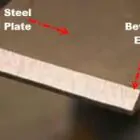If you want to make sure that your welding tools keep working well for a long time, you’ll need to calibrate them regularly. Companies that use welding technology need to know that their systems will always give the same results, no matter how long they are in use. Read and know the benefits of calibration of welding machines.
A welding system is always in connection to a calibration station for measurement of its voltage, amperage, and wire feed rate. It is also possible to figure out how fast the gas is moving through the welding current source. The calibration software looks at the values you’ve recorded for your welding systems and compares them to the standard specifications to find any differences. The European (EN) 50504 standard, “Validation of arc welding equipment,” lists the acceptable ranges for this result. It must be within those ranges. If the calibration process doesn’t produce good enough results, the right steps will have to be made. If a company doesn’t take these steps, they shouldn’t keep using the welding machine for production, not least because of quality assurance and product liability issues.
Benefits and Requirements.
As a general rule, you can do calibration on MIG/MAG, manual metal arc, and WIG systems. Companies that work with metal and are certified to a standard and regularly calibrate their welding equipment. The ISO 9000 series and EN ISO 3834-2 are two of the standards we are covering here. EN ISO 3834-2 sets out the rules for the quality assurance process for welded products. EN 1090 sets the rules for how steel and aluminium supporting structures are made. It also sets rule for how they are marked with CE. If a manufacturer meets the standards, they will be able to gain their customers’ trust. Which will help build a name for themselves as a professional business. Not only that, but being able to show that you did the calibration can help if someone complains.
There’s no way around the fact that system maintenance costs money. But it’s nothing compared to the price you’ll have to pay if damage happens. And you can’t show that your production process meets the standards. Don’t forget that accidents can hurt people as well as steel buildings. With this in mind, it is a company’s duty to their customers to make sure of the quality of their products. And the first step to doing this is to regularly calibrate their welding machines.
TIP: You can do safety inspections and calibration at the same time to save time and money.





